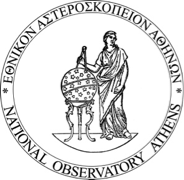
|
Special Session SS9
4 July 2016
Episodic accretion in star formation
The topic of episodic accretion has gained significant interest in the star formation community. It is now viewed as a common, though still poorly understood, phenomenon in low-mass star formation. The FU Orionis objects (FUor) are long-studied examples of this phenomenon. FUors are believed to undergo accretion outbursts during which the accretion rate rapidly increases from typically 1E-7 Msun/yr to 1E-4 Msun/yr, and remains elevated over timescales of several decades or more. EXors, a loosely defined class of pre-main sequence stars, exhibit similar but shorter and repetitive outbursts, associated with lower accretion rates. The relationship between the two classes, and their relationship to the standard pre-main sequence evolutionary sequence, is an open question: do they form two distinct classes, are they triggered by the same physical mechanism, and do they occur in the same evolutionary phases? Over the past couple of decades, many theoretical and numerical models have been
developed to explain the origin of FUor and EXor outbursts, and suggest that this phenomenon may be universal in star formation. In parallel, such accretion bursts have been detected at increasing rate, and each individual outburst is more carefully scrutinized and monitored across the electromagnetic spectrum.
Programme
Invited speakers Scientific organisers Contact Updated on Mon Mar 07 17:51:18 CET 2016
|
||||||||||||||||||||
|
EWASS 2016 : European Week of Astronomy and Space Science |
|||||||||||||||||||||
 A power cut will shut down all EAS services on Tuesday, 10 January 2017 starting at 7:30 CET.
A power cut will shut down all EAS services on Tuesday, 10 January 2017 starting at 7:30 CET.












